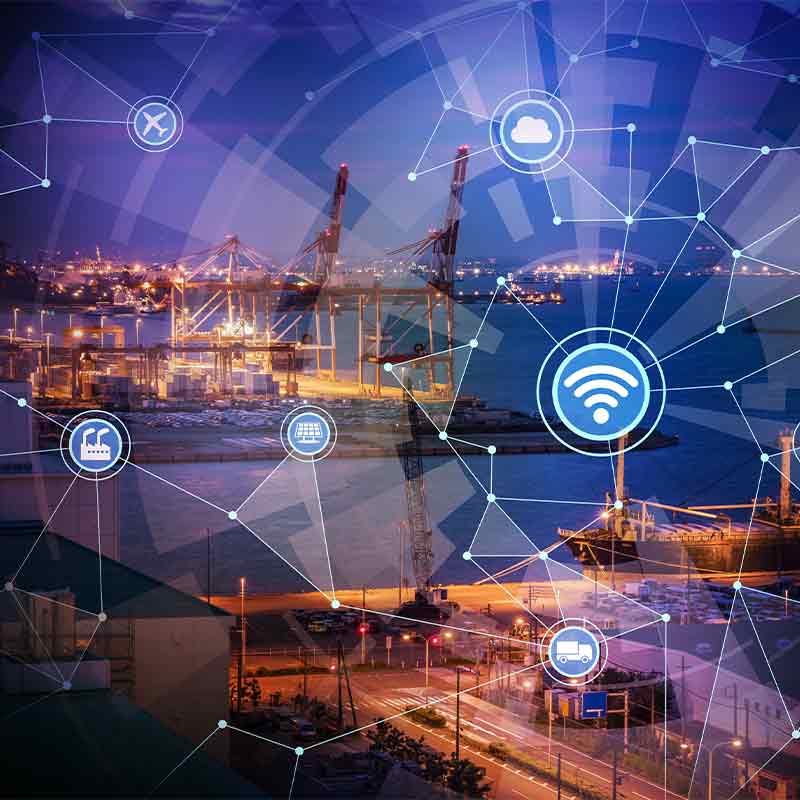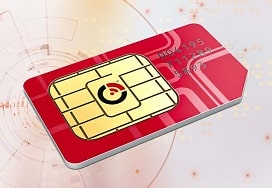Access Control Iot Devices What Is the Internet of Things?
The integration of IoT connectivity for supply chain administration has emerged as a revolutionary development lately. This expertise enhances the efficiency and transparency of supply chains, allowing companies to manage their operations extra effectively. The Internet of Things (IoT) includes a network of interconnected units that acquire and change data over the web. This connectivity is transforming the way organizations monitor and management their entire supply chain processes.
Supply chains historically operated with numerous ranges of guide oversight. This strategy usually resulted in inefficiencies, delays, and inaccuracies. Best Remotely Access Iot Devices Web. With IoT connectivity, companies can collect real-time knowledge from a quantity of sources, together with sensors, RFID tags, and GPS gadgets. This information offers insights into the status of products in transit, stock levels, and equipment efficiency. As a outcome, corporations could make knowledgeable decisions that enhance operational effectivity and cut back costs.
Real-time tracking of products in transit is amongst the most significant benefits of IoT connectivity for supply chain administration. By employing GPS and RFID know-how, organizations can monitor the precise location of their goods at any given time. This visibility mitigates the dangers of loss and theft. Moreover, it allows better planning and coordination, in the end leading to improved delivery instances and buyer satisfaction.
Data gathered by way of IoT units aids in forecasting and demand planning. Companies can analyze patterns and trends from historic information to predict future needs. This predictive capability permits organizations to regulate their stock ranges accordingly, thus preventing overstock or stockouts. Consequently, producers can align production schedules with market demand, attaining a more harmonious move inside the supply chain.
Example Of Iot Devices What Is IoT Device Management?
IoT connectivity additionally enhances asset management by offering real-time information about tools and equipment. Businesses can monitor the performance of their assets and schedule maintenance proactively, lowering downtime and making certain uninterrupted operations. Predictive maintenance powered by IoT can result in appreciable savings on repair prices and stop costly disruptions to manufacturing processes.
In addition to operational efficiencies, IoT connectivity for supply chain management fosters collaboration across varied stakeholders. Suppliers, distributors, and retailers can seamlessly share info, ensuring that everybody is aligned and informed. This shared data streamlines communication and decision-making, creating a extra cohesive network that may respond swiftly to any adjustments in circumstances or requirements.
The environmental impression of supply chains is becoming more and more critical in right now's business panorama. Companies are beneath strain to adopt sustainable practices. IoT connectivity can assist organizations in monitoring their carbon footprint and useful resource consumption. By gathering data on logistics and transportation, companies can optimize routes, thereby decreasing gas consumption and emissions. This strategy not solely enhances sustainability but also improves operational efficiency.
Remote Iot Devices What Do IoT Devices Do?
Implementing IoT connectivity just isn't without its challenges. Companies should invest in technology, infrastructure, and training to effectively utilize this approach. The costs related to deploying IoT devices and ensuring cybersecurity are potential obstacles. Addressing these challenges requires a strategic strategy that aligns the potential advantages of IoT connectivity with their organizational objectives.
Data privateness and safety are also significant concerns with the growing adoption of IoT in supply chains. The extra devices that connect with the internet, the greater the risks of cyberattacks and data breaches. Organizations have to prioritize strong cybersecurity measures, guaranteeing that their networks and data remain safe whereas enabling the full range of IoT capabilities.
Remote Iot Devices What Are IoT Devices?
Despite these challenges, the potential benefits of IoT connectivity for supply chain management are undeniable. Companies that embrace this technology will doubtless achieve a competitive edge of their respective markets. Efficiency improvements, higher customer service, and enhanced collaboration open the door to new opportunities for innovation and growth.
As organizations continue to recognize the value that IoT connectivity brings, the pattern is set to speed up. According to industry forecasts, the variety of related devices will solely improve, resulting in much more significant advancements in supply chain administration. Embracing IoT can transform supply chains from conventional, reactive models to proactive, data-driven ecosystems that dynamically adapt based mostly on real-time information.
The journey in direction of full IoT integration in supply chain management could also be gradual, but the path is obvious. Companies must be keen to invest in know-how and ensure they've the best abilities and assets in place. As supply chains evolve, the necessity for connectivity and data-driven insights will become paramount.
Remote Monitoring Of Iot Devices 9 IoT Devices Integrate with ERP
In conclusion, IoT connectivity for supply chain management represents a pivotal shift in how organizations operate. With real-time information, enhanced visibility, and improved collaboration, businesses are better outfitted to fulfill consumer calls for and navigate complexities. While there are challenges to handle, the benefits of embracing IoT connectivity far outweigh the obstacles. Companies prepared to innovate and adapt will thrive on this linked panorama, resulting in sustainable progress and improved operational performance.
- Enhances real-time visibility across the supply chain by enabling units to share data instantaneously.
- Facilitates predictive analytics to foresee supply chain disruptions and optimize inventory management.
- Enables distant monitoring of apparatus and assets, reducing the need for on-site inspections.
- Supports automated quality management processes by integrating IoT sensors that detect anomalies in merchandise.
- Improves traceability by way of decentralized systems, allowing for easier monitoring of products from origin to vacation spot.
- Streamlines logistics operations with smart routing and automated delivery updates based on real-time traffic information.
- Minimizes operational costs via energy-efficient routing and useful resource management enabled by connected devices.
- Fosters collaboration between suppliers and retailers by creating an integrated view of stock levels and demand.
- Enhances buyer expertise by offering transparency in order status and estimated delivery occasions via IoT connections.
- Enables rapid adaptation to market changes by allowing companies to gather and analyze data for agile decision-making.undefinedWhat is IoT connectivity in supply chain management?
IoT connectivity in supply chain administration refers back to the integration of Internet of Things units and sensors that facilitate real-time data change throughout the provision chain. Access Control Iot Devices. This connectivity enhances visibility, efficiency, and decision-making throughout the logistics course of.
How does IoT improve supply chain visibility?
Smart Iot Devices Smart IoT Home Overview
IoT enhances supply chain visibility by offering real-time monitoring of inventory, shipments, and property. Sensors collect information on location, temperature, and condition, permitting businesses to watch and reply to events proactively, lowering delays and this losses.
What are the benefits of utilizing IoT in supply chain management?
The key benefits of IoT in supply chain management embody improved efficiency, value financial savings, enhanced decision-making, better stock administration, increased transparency, and decreased risks associated with supply chain disruptions.
Best Remote Internet Access Iot Devices Internet of Things Device Overview
What challenges may companies face when implementing IoT in their supply chain?

Common challenges include integration with existing methods, knowledge safety and privateness concerns, high upfront costs, and the necessity for expert personnel to handle and analyze the information generated by IoT devices.
How can IoT help in demand forecasting?
Iot Connected Devices Overview of Internet of Things
IoT devices collect real-time data on shopper conduct and inventory levels, enabling more accurate demand forecasting. This data helps businesses adjust their supply chain operations dynamically, leading to better alignment with market demands.
Are there specific industries that benefit most from IoT connectivity in supply chains?

Industries corresponding to manufacturing, retail, logistics, and meals and beverage are among those who profit significantly from IoT connectivity. These sectors can utilize IoT to optimize operations, improve tracking, and enhance product quality.
How Iot Devices Are Managed? What Are IoT Devices? Definition, Types
What forms of IoT gadgets are commonly used in supply chain management?
- Iot Devices Meaning
Common IoT gadgets in supply chain management embrace GPS trackers, RFID tags, temperature and humidity sensors, and blog here smart cameras. These devices provide critical knowledge for monitoring property and making certain environment friendly operations.
Are Iot Devices Remotely Controllable Big List of IoT Devices

How does IoT impact sustainability in supply chains?
IoT promotes sustainability by optimizing resource use and reducing waste. By monitoring operations in real-time, companies can minimize energy consumption, decrease carbon footprints, and improve recycling efforts all through the provision chain.
Ssh Iot Devices Getting Started with IoT Devices
Is knowledge from IoT units secure?
While IoT units can supply important advantages, safety remains a concern. Businesses should implement robust data safety measures, such as encryption, secure access controls, and regular security audits, to safeguard sensitive information collected by IoT systems.